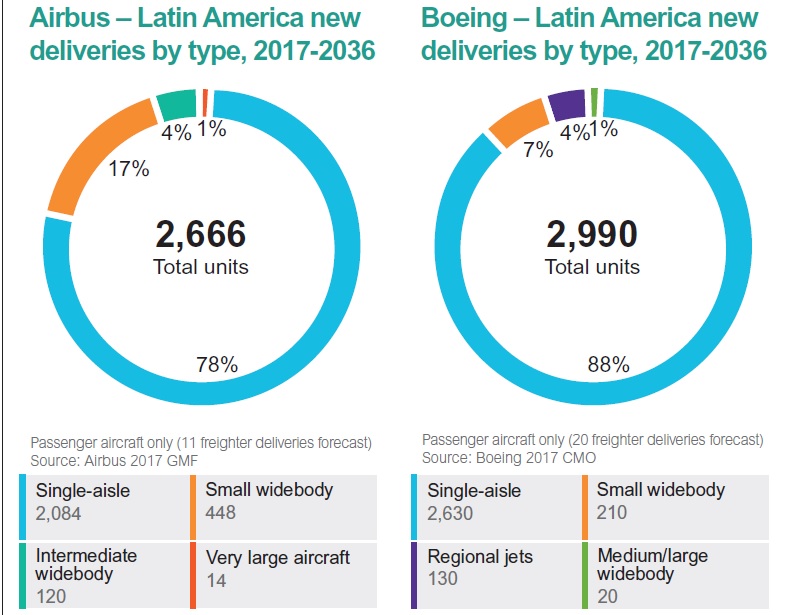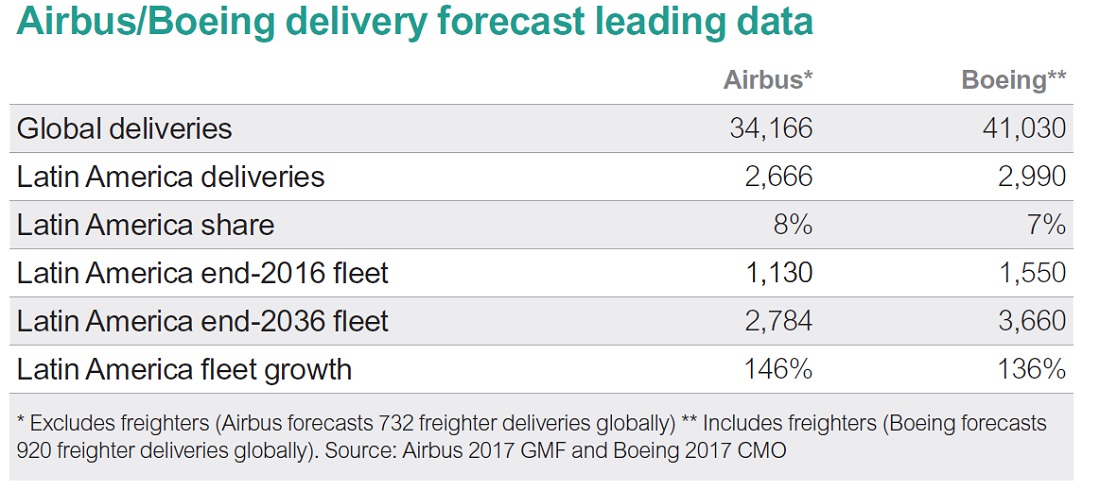The airliner fleet in Latin America and the Caribbean will more than double over the next 20 years despite obstacles such as inadequate infrastructure and income inequality.
That’s the view of Airbus and Boeing in their latest long-term demand forecasts,as the airlines in the region gather at the annual ALTA Airline Leaders Forum. Airbus predicts 2,700 airliner deliveries through to 2036, while Boeing forecasts 3,000. This equates to 8% (Airbus) or 7% (Boeing) of all deliveries globally over the next 20 years.
This forecast demand will power the Latin American fleet to expand by 135-145% over the period to between 2,800 and 3,700 airliners.
“Despite the economic difficulties faced in the region in recent years, total traffic has grown consistently except for 2016, when the decrease in Brazilian domestic traffic caused an overall decline,” says Airbus in its 2017 global market forecast (GMF).
Airbus forecasts that real GDP growth will average 3% annually over the period.

Boeing, in its 2017 current market outlook (CMO), concurs. It forecasts that economic reforms “notably in Argentina and Brazil” will stimulate domestic economies and improve the outlook for the region with a GDP growth rate of 3%.
“The Pacific countries of Chile, Colombia and Peru are expected to grow at a higher-than-average GDP rate due to pro-business environments, while Mexico, the largest economy in Central America, is forecast to grow at the average regional average rate over the long-term,” says Boeing in its 2017 CMO.
Airbus expects to see further liberalisation in the region. “Argentina for example has conditionally agreed 135 new routes for five airlines,” it says.
A “free-market approach” is driving change, says Boeing, as increasing competition helps stimulate traffic growth. “In particular, the free market approach of the Pacific countries is reshaping the Latin American airline industry with the emergence of pan-regional brands due to liberalised agreements on cross-border ownership and consolidation.”
The airframer adds: “As a result of the economic reforms and competitive landscape, the Latin American aviation market is expected to grow at a higher-than-global average annual rate of 6% over the next 20 years.”

The bulk of the new deliveries will be of single-aisle types like the Airbus A320 family and Boeing 737. Airbus forecasts 2,084 narrowbodies accounting for 78% of deliveries, while Boeing puts demand even higher – 2,630 narrowbodies accounting for 88%.
Airbus sees greater demand for widebody twins than its rival, with 568 deliveries forecast against less than 250 in Boeing’s forecast. Toulouse also sees demand for 14 very large aircraft in the 450-seat-plus category – possibly A380s.
Source: Flight Daily News


























